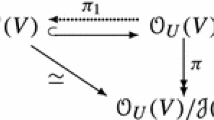Abstract
In this paper, we discuss the possibility of using computer algebra tools in the process of modeling and qualitative analysis of mechanical systems and problems from theoretical physics. We describe some constructions—Courant algebroids and Dirac structures—from the so-called generalized geometry. They prove to be a convenient language for studying the internal structure of the differential equations of port-Hamiltonian and implicit Lagrangian systems, which describe dissipative or coupled mechanical systems and systems with constraints, respectively. For both classes of systems, we formulate some open problems that can be solved using computer algebra tools and methods. We also recall the definitions of graded manifolds and Q‑structures from graded geometry. On particular examples, we explain how classical differential geometry is described in the framework of the graded formalism and what related computational questions can arise. This direction of research is apparently an almost unexplored branch of computer algebra.
Similar content being viewed by others
REFERENCES
Courant, T.J., Dirac manifolds, Trans. Amer. Math. Soc., 1990, vol. 319, pp. 631–661.
Yoshimura, H. and Marsden, J.E., Dirac structures in Lagrangian mechanics. Part I: Implicit Lagrangian systems, J. Geom. Phys., 2006, vol. 57.
Yoshimura, H. and Marsden, J.E., Dirac structures in Lagrangian mechanics. Part II: Variational structures, J. Geom. Phys., 2006, vol. 57.
Salnikov, V. and Hamdouni, A., From modeling of systems with constraints to generalized geometry and back to numerics, Z. Angew. Math. Mech., 2019.
Razafindralandy, D., Salnikov, V., Hamdouni, A., and Deeb, A., Some robust integrators for large time dynamics, Adv. Model. Simul. Eng. Sci., 2019.
Maschke, B.M., van der Schaft, A.J., and Breedveld, P.C., An intrinsic Hamiltonian formulation of network dynamics: Non-standard Poisson structures and gyrators, J. Franklin Inst., 1992, vol. 329.
van der Schaft, A., Port-Hamiltonian systems: An introductory survey, Proc. Int. Congr. Mathematicians, Madrid, 2006.
Tulczyjew, W.M., The Legendre transformation, Ann. Inst. H. Poincaré,Sect. A, 1977, vol. 27, no. 1, pp. 101–114.
Verlet, L., Computer “experiments” on classical fluids, Phys. Rev., 1967, vol. 159, pp. 98–103.
Yoshida, H., Construction of higher-order symplectic integrators, Phys. Lett. A, 1990, vol. 150, p. 262.
Falaize, A. and Hélie, T., Passive simulation of the nonlinear port-Hamiltonian modeling of a Rhodes piano, J. Sound Vib., 2016.
Kotov, A., Schaller, P., and Strobl, T., Dirac sigma models, Commun. Math. Phys., 2005, vol. 260.
Salnikov, V. and Hamdouni, A., Geometric integrators in mechanics: The need for computer algebra tools, Proc. 3rd Int. Conf. Computer Algebra, Moscow, 2019.
Salnikov, V. and Hamdouni, A., Géométrie généralisée et graduée pour la mécanique, Proc. Congrès Français de Mécanique, Brest, France, 2019.
Kushner, A., Lychagin, V., and Rubtsov, V., Contact geometry and non-linear differential equations, Encyclopedia of Mathematics and its Applications, Cambridge University Press, 2007.
Krasil’shchik, I.S., Vinogradov, A.M., et al., Symmetries and conservation laws for differential equations of mathematical physics, Amer. Math. Soc., 1999.
Hamdouni, A. and Salnikov, V., Dirac integrators for port-Hamiltonian systems, in prep.
Salnikov, V. and Hamdouni, A., Discretization in the graded world, in prep.
7. ACKNOWLEDGMENTS
V.N. Salnikov is grateful to S.A. Abramov, S.Ya. Stepanov, and A. Prokopenya for interesting questions and fruitful discussions on the topic, as well as for their useful remarks in preparing the manuscript.
Author information
Authors and Affiliations
Corresponding authors
Additional information
Translated by Yu. Kornienko
Rights and permissions
About this article
Cite this article
Salnikov, V.N., Hamdouni, A. Differential Geometry and Mechanics: A Source for Computer Algebra Problems. Program Comput Soft 46, 126–132 (2020). https://doi.org/10.1134/S0361768820020097
Received:
Revised:
Accepted:
Published:
Issue Date:
DOI: https://doi.org/10.1134/S0361768820020097




